It cannot even be imagined what a terrible fate the highly-regarded Holy Crown met: it had to flee from the enemy several times, and it was certainly buried more than once so that the invaders could not get it. This also happened on 23 August 1849, when, on the orders of Prime Minister Bertalan Szemere, it was hidden in the swamp in Orsova (today Romania), on the southern border. They could be confident that it would not be damaged since it was kept in a massive chest together with the other coronation insignia. Imperial troops finally tracked it down in 1853. The Holy Crown really did not suffer from the harsh conditions, but the sword rusted and the cloak faded. The insignia were transported to Buda, to the royal palace, which was still much more modest in size than it is today.
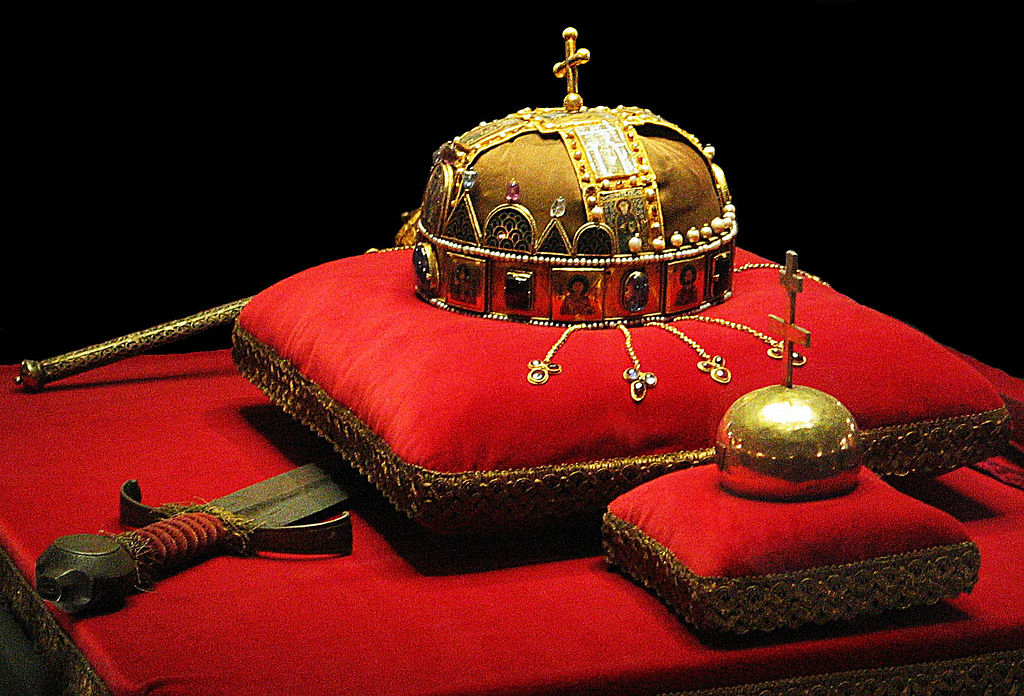
The coronation insignia: the Holy Crown, the sceptre, the sword and the globus cruciger (Source: hu.wikipedia.org)
It was not moved for a decade and a half, but on 8 June 1867, it was transferred to the Church of the Assumption (Mátyás Church) in Buda Castle, so that it could be put on the head of Franz Joseph I of Habsburg-Lorraine. The coronation was the most important stage of the Austro-Hungarian Compromise of 1867, which was accompanied by a huge celebration, a significant part of the royal court went to Buda. This event highlighted that the palace was indeed extremely small compared to the expectations of the time, so they soon decided to expand it.
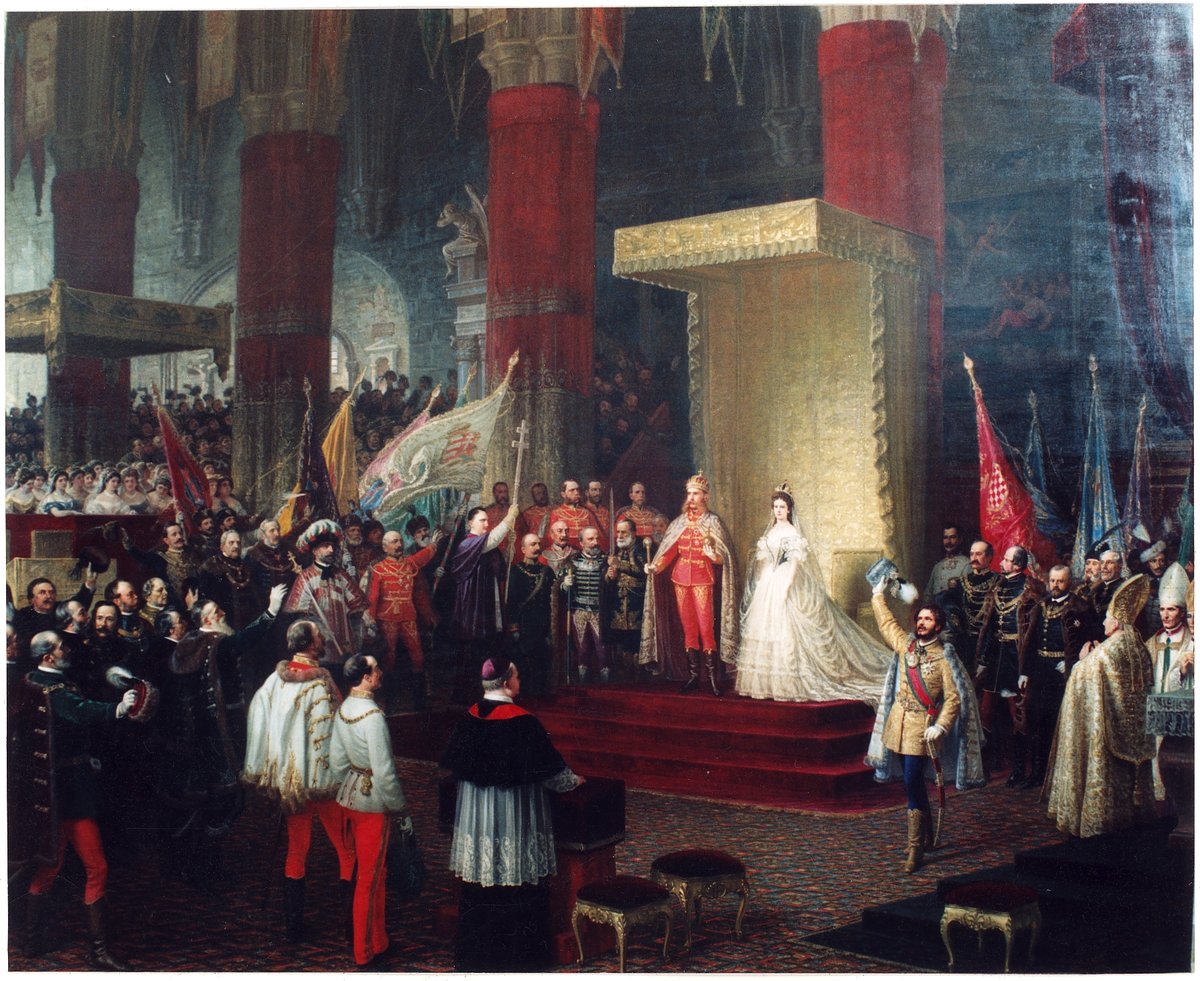
Eduard Engerth: Coronation of Franz Joseph and Elizabeth (Source: Museum of Fine Arts Collection after 1800, Reference No.: 92.6.B)
The design was entrusted to the most prestigious architect of the time, Miklós Ybl, who expanded the palace to the west. Since Castle Hill was not wide enough here either, the new wing on the Krisztinaváros side was supported by a four-story substructure, and the three-story, rectangular palace with two inner courtyards was placed on top of it. Their longer sides ran parallel to the old, Baroque-era palace, and from their shorter sides, a narrow wing extended over it, thus forming a huge courtyard, which is now called the Lion's Court after the statues guarding the entrance gate.
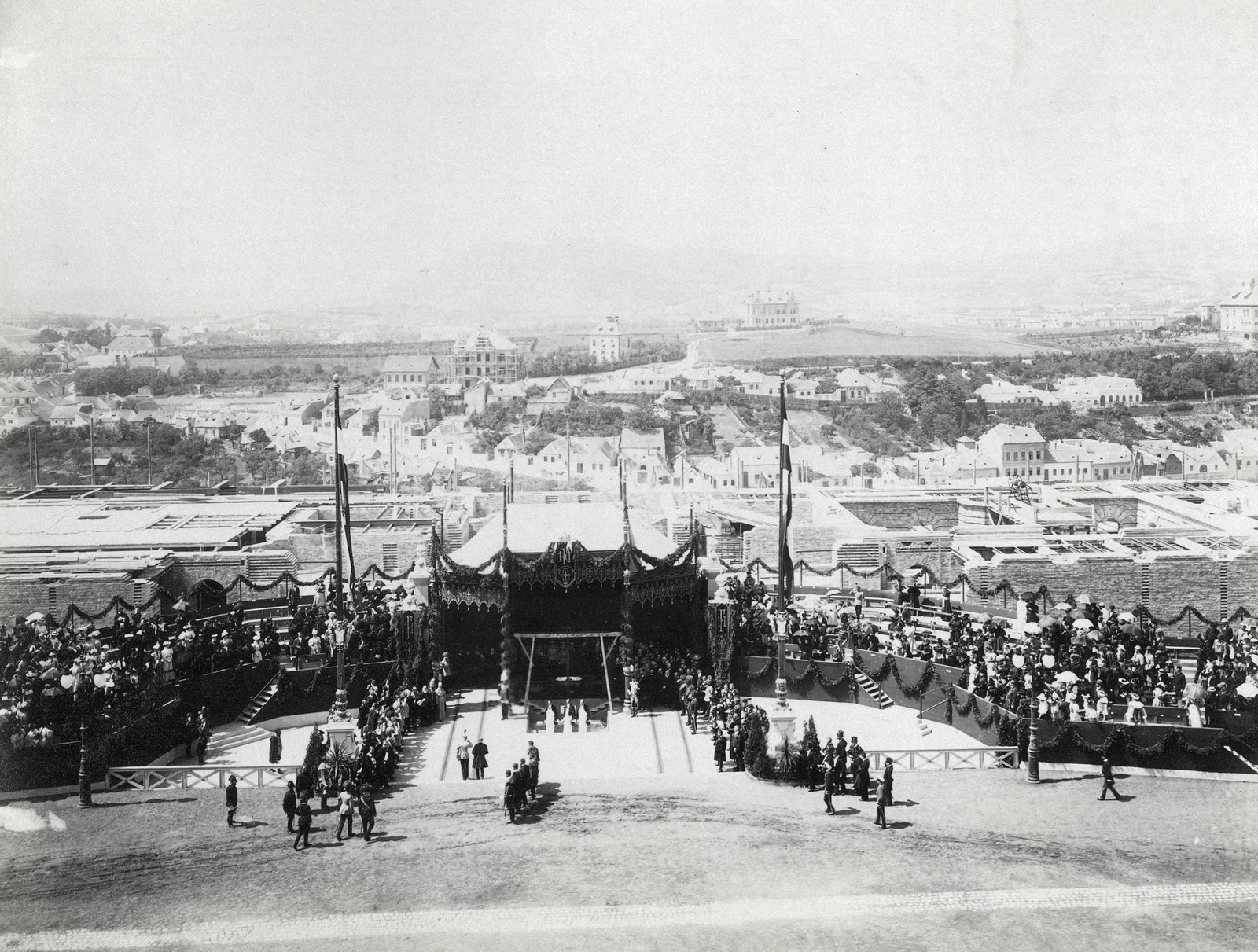
Ceremonial laying of the foundation stone of the western wing of the royal palace (Source: Fortepan/Budapest Archives, Reference No.: HU.BFL.XV.19.d.1.09.167)
Unfortunately, Ybl died in 1891, and Alajos Hauszmann was appointed as his successor, so he managed the construction. The foundation stone was laid on 6 June 1896, as part of the millennium celebrations - although almost the entire substructure was already standing at that time - and it was completed in four years. Thus, in 1900, the Holy Crown was also transferred to the new wing, and the room on the second floor of the north-east corner of the building was designated as its place. Inside, there was a thin partition that divided the space into two parts in a ratio of one-third to two-thirds, but a door opened on it, so it did not obstruct traffic. Service rooms for the guards were also created around them. Due to its name, the strong room was characterised by increased security conditions, for example, its door had a triple locking system. Two of the three keys were guarded by the two national crown guards, the third by the prime minister, at least a 1928 law stipulated so.
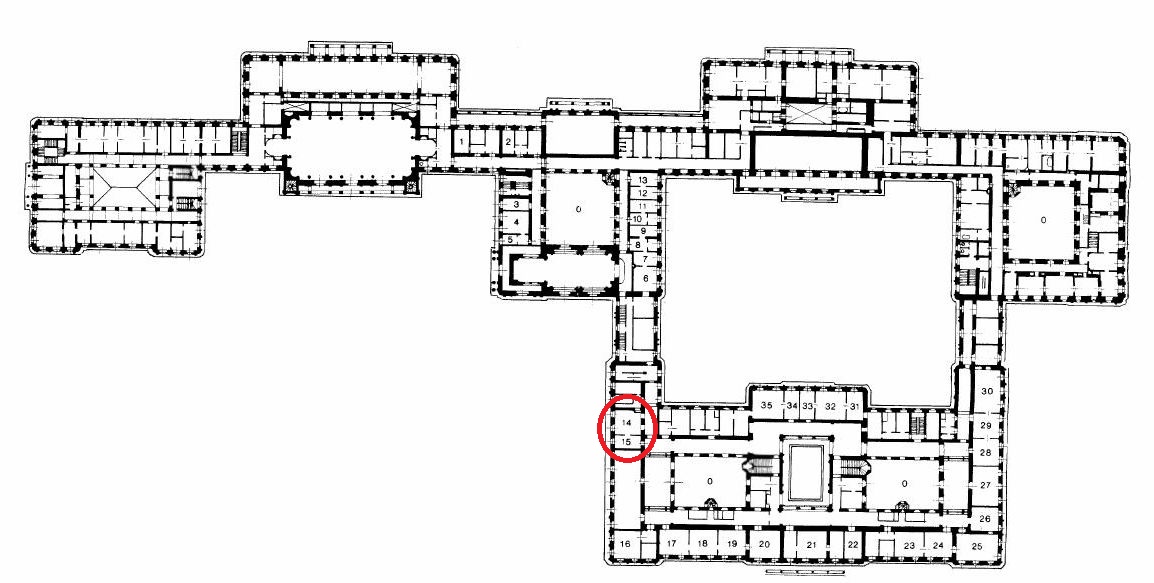
The floor plan of the second floor of the royal palace, the place where the Holy Crown was kept is marked in red (Source: Ernő Bangha: A magyar királyi testőrség 1920-1944 [The Hungarian Royal Bodyguard 1920-1944], Európa Könyvkiadó, Budapest 1990)
Along with the coronation insignia, of course, their guards also came, since in 1608, King Matthias II had already regulated the supervision of the Holy Crown by law. He appointed only two nobles to the task, but after 1751, the Crown Guard was organised from the regular military, whose operation was regulated by a decree of Franz Joseph issued in 1871: he maximised their number at fifty, and placed two national Crown Guards at their head. The ornate uniform known from the photographs was regularised at the beginning of the 20th century: they wore a decorative cap embellished with egret feathers, green atillas [a traditional Hungarian short coat], red trousers and white cloaks, so they dressed in the national colours. Matthias II also made the chest containing the coronation insignia, which was used for more than three hundred years.
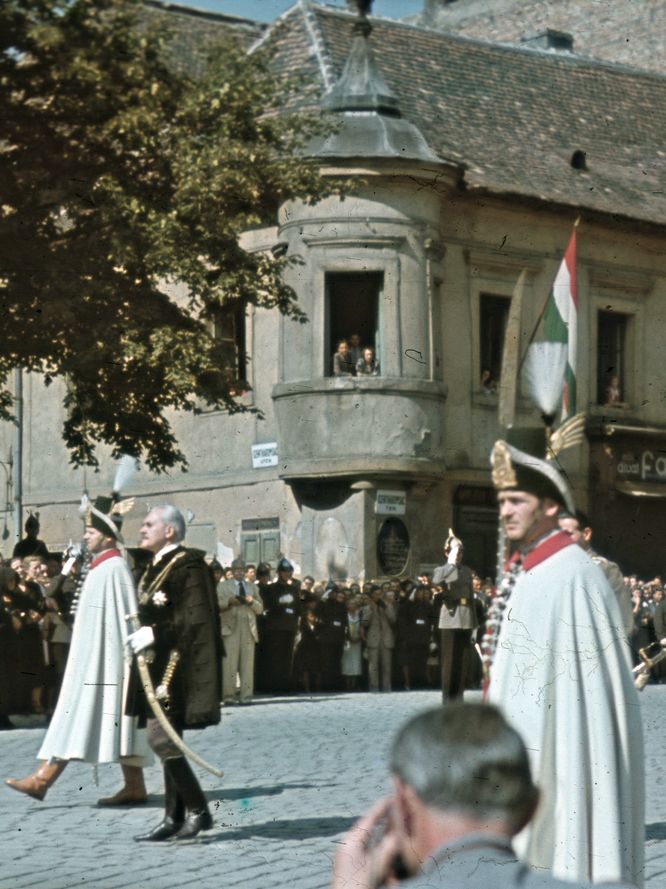
Crown Guards on Szentháromság Square in 1943 (Source: Fortepan/No.: 20821)
To provide security for its contents, the sides and lid of the wooden chest were reinforced with iron plates, as well as crosswise and lengthwise with iron straps, which actually formed a net on its surface. The straps were fixed with rivets to the walls of the chest, on the front of which the national coat of arms is on the left, and the Latin monogram of Matthias II (Mathias) was visible, wreathed with laurel branches. The coat of arms is not exactly the same as the one used today: its upper corners are flattened, its sides are incised - similar to the Kossuth coat of arms - and its interior is divided into four parts with a horizontal cut and a vertical slit: with a diagonal arrangement, two are filled with Árpád stripes, and two are filled with double-crosses standing on three hills. Above the coat of arms, of course, the Holy Crown can be seen, which was also placed above the monogram of Matthias II. But while the former showed it from the front view, the latter from the back view. Handles were attached to the two ends of the chest to facilitate transport, as it weighed more than one and a half quintals.
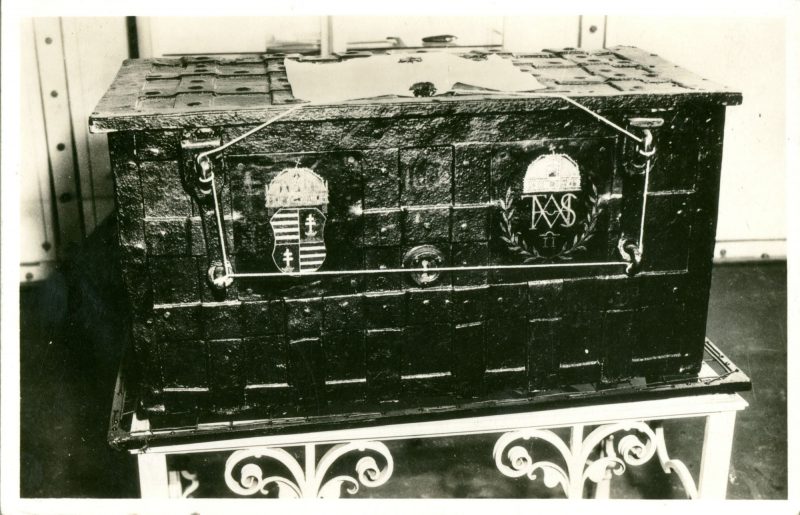
The sealed crown chest in 1916 (Source: Institute of History, Research Centre for The Humanities, Hungarian Academy of Sciences)
A lock was installed on the front side as well as in the lid, and these two panels were also connected with separate straps. A string was threaded through their holes, which was attached to the lid and sealed, so the chest was impossible to open without a trace, even with the keys. However, there were also cases where it was not opened with a key: on 14 February 1638 King Ferdinand III's wife would have been crowned in Pozsony [Bratislava] (according to the tradition from the Middle Ages, the right shoulder of the queen should be touched with the Holy Crown), but the keys were left in Vienna. The crown was also kept there since Buda was still in Turkish hands at the time. The ceremony could not be delayed, so the chest had to be pried open, and it is most likely that the cross on top of the Crown became crooked then.
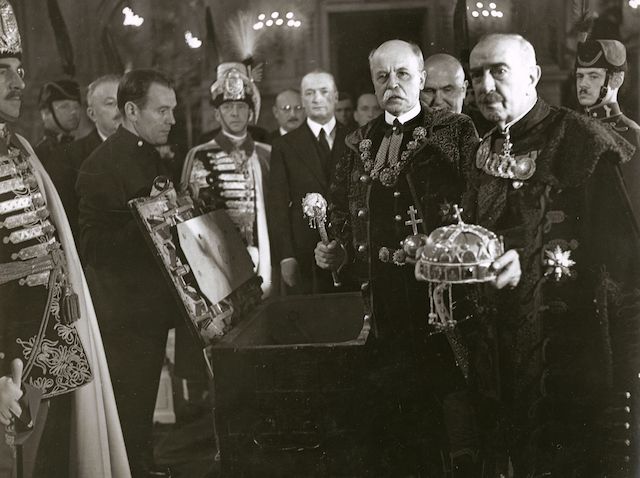
Public display of the Holy Crown in 1938, still with the old chest (Source: Hungarian National Museum Historical Photo Gallery, Reference No.: 62.6410)
Just three hundred years later, a double holy year was announced in our country: in addition to the nine hundredth anniversary of the death of our founding king, in 1938 Budapest was also able to organise the World Eucharistic Congress. The Holy Crown was then taken out of the strong room for a longer period of time and put on public display in the royal palace, and then it was sent on a tour of the country. The government thought it was time to have a new chest made for the coronation insignia, which they did. This was longer than the previous one, and its lid was also higher, but it was not so densely covered with iron straps, mainly only the edges were stiffened. Two straps each divided the longer sides and the lid into three sections. In the middle section of the front side, the angelic national coat of arms was placed - that of entire Great Hungary, since the parts lost in the Treaty of Trianon were also the countries of the Holy Crown.
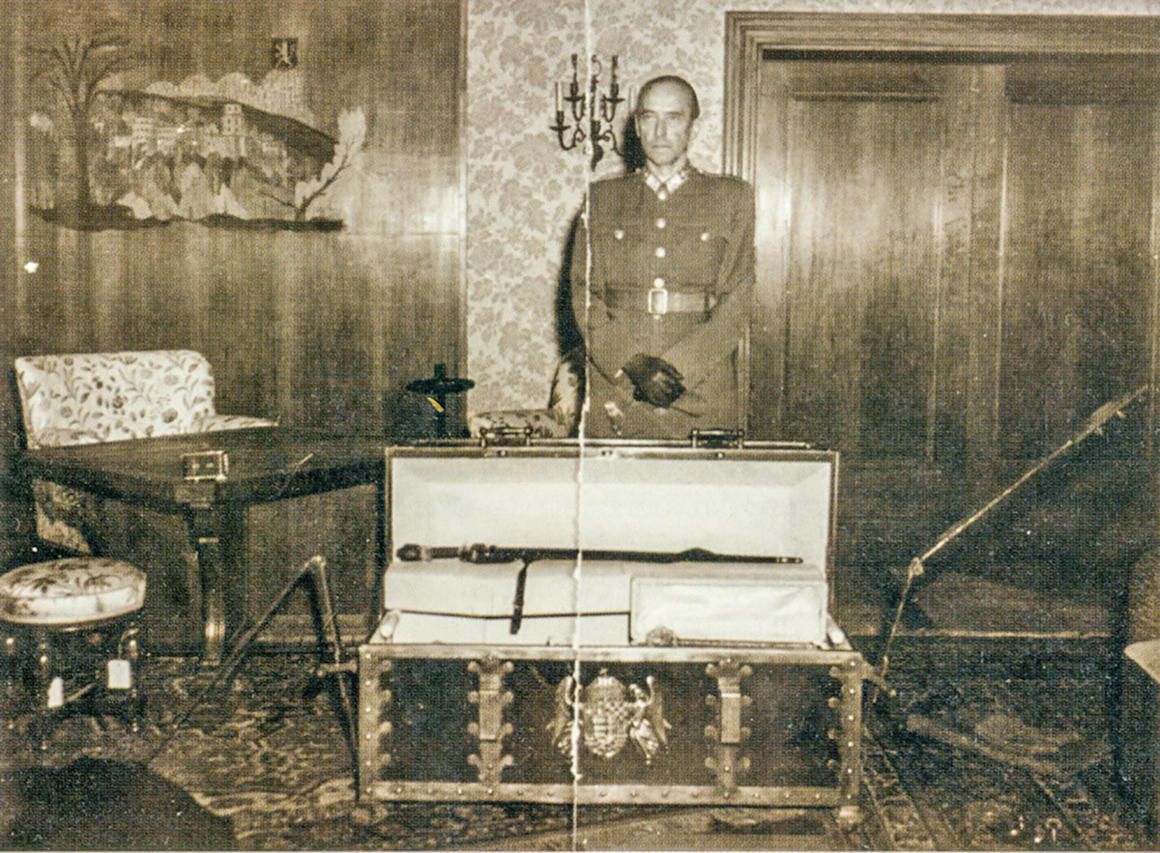
The new crown chest in 1945, behind it Ernő Pajtás, the last commander of the Crown Guard (Source: hu.wikipedia.org)
Due to the bombings of World War II, the Holy Crown was first taken to the shelter under the Buda Castle, and then in 1945 to the West from the siege of Budapest. It was right to worry about its fate since the strong room was completely destroyed during the siege of the capital.
After the peace treaty, it was kept for a while in Germany, and then for twenty-five years at the famous military base of Fort Knox in Texas. The symbol of our state returned to our country forty-five years ago: it crossed the border on 5 January 1978, and we officially received it back from the United States of America on 6 January. From then on, it was stored in the Hungarian National Museum.
During the restoration of the Buda Castle, which began in the 1960s, the interior layout of the Krisztinaváros wing was also completely changed, and now a corridor stretches in place of the strong room. The National Széchényi Library - which has been operating in the building since 1985 - takes into account the fact, which cannot be ignored, and marked with a plaque that the Holy Crown was kept in that place for nearly half a century.
Cover photo: The sealed crown chest in 1916 (Source: Institute of History, Research Centre for The Humanities, Hungarian Academy of Sciences)
RELATED ARTICLE:

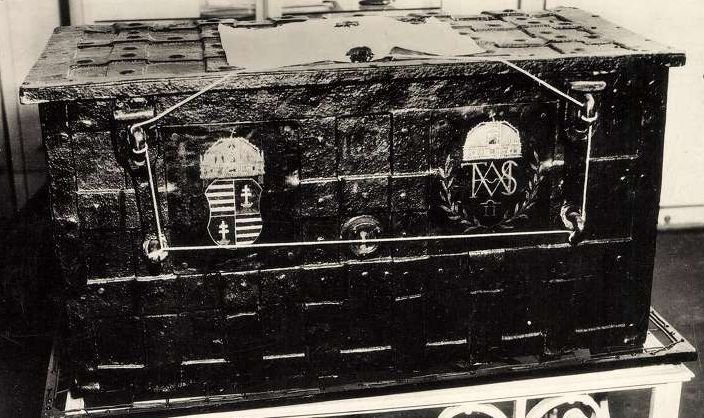


































Hozzászólások
Log in or register to comment!
Login Registration